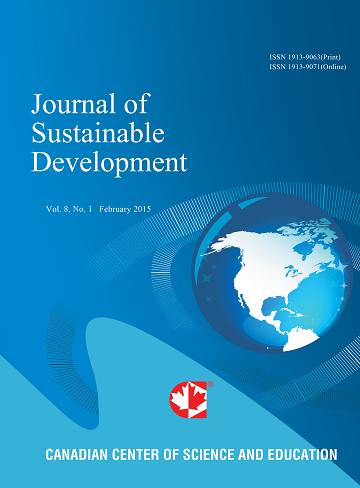The Environmental Pollution of Lake Joao Paulo II and Impact on The Population Around Lake, Dili, Timor-Leste
- Antero Freitas Branco
Abstract
Lake environmental pollution refers to a shift from normal to abnormal conditions in the environment, caused by various factors. This change is called a pollutant when the environment of the lake exceeds the tolerance limit of the existing ecosystem. Lake João Paulo II is one of the lakes whose condition has undergone changes in the water body due to the activities of the population around the lake. This study aims to investigate the environmental conditions of Lake João Paulo II, particularly regarding the activities of residents, and their impact on environmental pollution in freshwater lakes, saltwater lakes, and rivers. It also examines regulations regarding pollution and waste management, as well as the implications of environmental pollution. This qualitative descriptive method, according to Flyvbjerg (2011), while a detailed examination of a single instance of a phenomenon through a case study may not yield reliable information regarding the broader class, it can be beneficial during the initial phases of an investigation. This approach facilitates the generation of hypotheses that can subsequently be tested systematically with a larger sample of cases. Furthermore, it involves an in-depth analysis of an individual unit, such as a person or community, with an emphasis on developmental factors related to the environment. Sample analysis was conducted at the Laboratory. At the same time, the data analysis strategy uses qualitative analysis methods, descriptive and quantitative statistical methods to determine the level of problems and effect factors that cause an impact on the health of residents suffering from environmental pollution of Lake João Paulo II water. The results of this research show that several main factors trigger environmental pollution, with residents around Lake João Paulo II causing adverse health effects in the environment, where many people live on the edge of the lake. Following the analysis of secondary data on the Health Center of Comoro, the types of diseases that are generally suffered by residents around are infection via respiratory/IVR, allergies, diarrhea, malaria/dengue have increased in early 2019 and 2020, the number decreased in 2021 due to the prohibition on the limitation of activities. Still, it increased again in early 2022 and 2023. The turbidity level was found to be 71.2 NTU. The value is marginally elevated for standard measurements due to the index being slightly larger. The acidity/pH level of the sample was found to be 7.22. The pH value and salinity level, which has a value of 140 ‰, both exceed the normal standards. The elevated values of this index can be attributed to the presence of high salt content and the subsequent accumulation of salt elements. The value for the dissolved oxygen (DO) level is 0.0643 mg/L, which is marginally higher than the typical range for water content. For biochemical oxygen demand, the value is 41.22 mg/L, which is also elevated compared to the standard value. Furthermore, the turbidity level of domestic wastewater was found to be 104 NTU, which is indicative of dense and abnormal turbidity. The pH level of the substance under investigation was found to be 7, with an acidity index value that was marginally superior due to the negligible disparity in measurement. The salinity index is notably low, attributable to the presence of a minimal salt content. The DO index value is also found to be abnormal, a consequence of the quality of the wastewater, which contains solid elements. The BOD index value is 201. The observed value of 20 mg/L indicates an abnormality, as it exceeds the standard value. Consequently, these unstable test results have a significant impact on the quality of the lake water due to the presence of intervention elements from residents around the lake.
- Full Text:
 PDF
PDF
- DOI:10.5539/jsd.v18n6p1
Journal Metrics
Index
- Academic Journals Database
- ACNP
- AGRICOLA
- ANVUR (Italian National Agency for the Evaluation of Universities and Research Institutes)
- Berkeley Library
- CAB Abstracts
- CNKI Scholar
- COPAC
- CrossRef
- DTU Library
- EBSCOhost
- Elektronische Zeitschriftenbibliothek (EZB)
- EuroPub Database
- Excellence in Research for Australia (ERA)
- Genamics JournalSeek
- GETIT@YALE (Yale University Library)
- Ghent University Library
- Google Scholar
- Harvard Library
- INDEX ISLAMICUS
- Infotrieve
- Jisc Library Hub Discover
- JournalGuide
- JournalTOCs
- LOCKSS
- Max Planck Institutes
- MIAR
- Mir@bel
- NewJour
- Norwegian Centre for Research Data (NSD)
- Open J-Gate
- PKP Open Archives Harvester
- Pollution Abstracts
- Publons
- Pubmed journal list
- RePEc
- ROAD
- SafetyLit
- Scilit
- SHERPA/RoMEO
- Standard Periodical Directory
- Stanford Libraries
- UCR Library
- Ulrich's
- UniCat
- Universe Digital Library
- UoS Library
- WJCI Report
- WorldCat
- WorldWideScience
- Zeitschriften Daten Bank (ZDB)
Contact
- Sherry SunEditorial Assistant
- jsd@ccsenet.org
